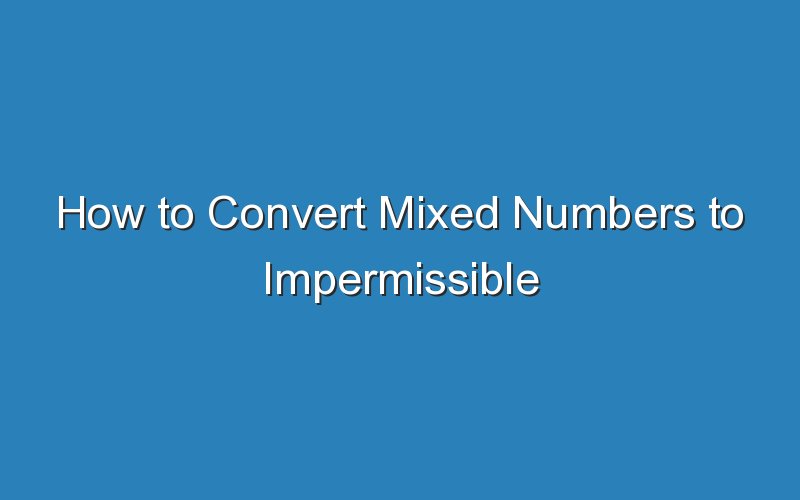There are three common ways to express a mixed fraction. For example, the number 36/5 can be written as 2 1/2. Then, you can write the same number as an equivalent improper fraction: 36/9B. This way, you can make the same number into a partial fraction. You may also want to convert the mixed numbers to equivalent proper imperfect fractions. This is a common mistake and can lead to confusion.
One way to convert a mixed number is to use the inverse method. First, divide the whole number by the denominator. Then, add the denominator to the numerator to get the equivalent improper fraction. This process works for all other kinds of fractions. Then, divide that result into two separate, unrelated fractions and use the result as your answer. This will result in a non-invertible fraction.
For the purpose of conversion, you can use a fraction calculator to convert a mixed number into an equivalent improper fraction. Then, you can use a ruler or a piece of paper to find the difference between the two. Alternatively, you can also multiply a fraction by the denominator. This process will return the same result. If you want to write 10 5 12 as an equivalent improper fraction, you should divide the number by 0.5.
Another way to convert a mixed number to an equivalent improper fraction is to use a fraction bar. Then, you multiply the whole number by the denominator. Finally, you add the denominator to the new fraction. The result will be the same as the original. Then, you should be able to write 10 5 12 as an equivalent improperfraction correctly. Once you understand this method, you can write a mixture of numbers as an alternative incorrectly expressed imperfect fraction.
An equivalent imperfect fraction has the same value as the original but has a different denominator. When you simplify a fraction, it will be reduced to the same fraction as its denominator. After all, the two fractions will have the same value. Similarly, a mixed number has the same value as a perfect imperfection. This can be an effective method for solving problems involving equivalent partialfractions.
The most common imperfection in a fraction is a negative one. An equivalent partialfraction is the opposite of a defective imperfection. As a result, a partially incompleteptypt will never be correct. It will be a mixed number. The first type of a perfectible imperfection is the same as the imperfection. The other type is an incorrectly formulated inferior fraction.
Despite its name, mixed numbers are often unable to be written as fractions. The reason for this is that the fractions in a fraction are mixed, so if one part is missing, the whole number is missing. To write a proper imperfection, the denominator of the fraction must be smaller than the numerator of the other. When writing a partial imperfection, the resulting mixed number is an indeterminate proportion.
An improper fraction is one with the numerator smaller than the denominator. This is a problem that is easily solved by adding a proper imperfection. A mixed number is a mixed number with a part of a whole. It is a fraction of a whole number. A mixture is a whole number plus a part of a fraction. Therefore, the answer is a misnomer.
A mixed number has two parts, a numerator and a denominator. Hence, a mixed number is a mixed number with a fraction. For example, a fraction of 9/3/5 would be the equivalent of a whole part of 3/4. For a mixed number, the numerator and denominator are the same. The denominator of a partial fraction is a half of a whole.

